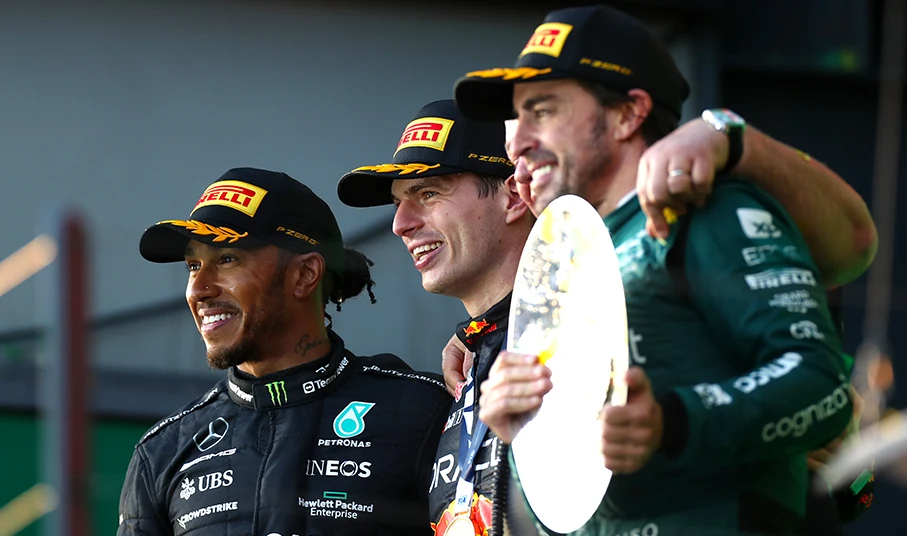2023 F1 GP in Melbourne - Were all those Red flags necessary?

Formula One's Australian Grand Prix set a record for being the most red-flagged Grand Prix in F1's 73-year history. Three stoppages left fans waiting over two and a half hours to find out who the winner would be before a procession behind the safety car eventually concluded the 58 laps despite the race director's attempt to add late-race spice.
Rather than a grandstand finish, the final 30 minutes under Melbourne's setting sun saw drivers and teams waiting in the pit lane, confused about how the race would finish; a bizarre situation for a sport that's all about precision. I feel there's been a distinct lurch towards manufacturing memorable moments in recent F1 years, with unnecessary red flag periods as part of that, and it's hurting the sport's integrity.
In years gone by, a late-race crash would have the cars trundle around behind the safety car until the marshals cleared the wreckage or the checkered flag waved. Whether the hard-working army of trackside volunteers could clean up an incident in time for a race restart was part of the game. Sometimes a lap or two of frantic racing followed; other times, it was a dull, reduced-speed ending.

Abu Dhabi 2021 was the most extreme example of this move to manufacturing inorganic racing, where ad-hoc rules came down from race control that prioritized getting the Grand Prix underway rather than following the precedent set throughout the year. Michael Masi's decision to only let some lapped cars unlap themselves and then restart the race before rejoining the back of the pack created an unbelievable one-lap shootout that didn't follow the sport's rules.
The fierce debate about that fateful Abu Dhabi evening still rages today, with Twitter, Reddit, and any other medium people can share their comments filled with opinions and bitter arguments. We saw the side effects of Masi's Abu Dhabi orders in Melbourne, with the FIA seeking to please onlookers yet frustrating many instead.
Last year's Italian Grand Prix had Daniel Ricciardo retire with a late mechanical failure. The race finished under the safety car because, in the FIA's words, "the incident was not significant enough to require a red flag." Although there was considerable backlash over that race's ending, it's necessary to note that the anger from teams and fans stemmed from the marshals clearing Ricciardo's McLaren over a lap before the last tour, but the safety car stayed out.

Perhaps with the ghost of Italy and Abu Dhabi in their minds, Kevin Magnussen's Lap 54 crash into Australia's Turn 2 wall meant the resulting safety card morphed into a red flag one lap later, setting up a two-lap dash to the finish. As tantalizing as that sounds for viewers seeking entertainment on paper, the shock expressed by race leaders Max Verstappen, Lewis Hamilton, and Fernando Alonso on their team radio highlighted what an unusual call it was. They thought Magnussen's damaged Haas had not justified a red flag — and I agree.
Newer fans will feel familiar with F1's red flag stoppages thanks to their volume in recent years. I recall my younger self being entirely unsure about the procedure when a red flag appeared; that's how rare they seemed. I thought they had increased in frequency recently, yet dipping into the numbers more stunned me by how much things have changed:
- Eighty-three races have featured red flags in Formula 1 since 1950, with 92 total stoppages, with only a handful having multiple red flag periods.

- Thirteen races have had 17 red flags since the 2020 season started; In the three seasons before, there was just one.
- Yet the statistic that floored me most is that we've had five races in the last decade where race control stopped proceedings multiple times while the previous sixty three years had just one.
Safety must come first, and I'm unwaveringly behind that. Yet this trend has reached its watershed moment with three stoppages in one Grand Prix. The first came from on-track gravel and the second from a relatively standard mid-race F1 crash — both recoverable incidents under a safety car. Had the second continued to be a safety car as the pit walls and drivers expected, we wouldn't have had any red flags at Melbourne, as the four-car crash on Lap 57 that triggered the final stoppage wouldn't have occurred.

I am all for changes to help improve the sport, like the 2022 regulation change that lets drivers closely follow each other and even, perhaps controversially, DRS. These are defined rules that every driver, and more crucially, every fan, understands in a race, and each racer has an equal opportunity to benefit from them.
If F1 is changing to throwing red flags because a crash happens late or there's gravel on the track... Well, that's more like gambling for drivers. The carnage in Australia shows how unfair that was, with Alonso spinning to the back from a comfortable P3 and both Alpines crashing out, although they ran in the points. Someone like Oscar Piastri or Guanyu Zhou wins big, gaining a top 10 finish even though it wasn’t on merit, while Pierre Gasly and Esteban Ocon lost their hard-earned top 10 positions.
Sometimes when you watch football, hockey, basketball, or any other sport, there's a dull game, but that's okay because there might be a thriller next time. F1 should be no different; after all, sports provide entertainment organically. If Formula One and the FIA think they must try to manufacture sensational sporting moments, then it's no longer a sport; it's a soap opera.